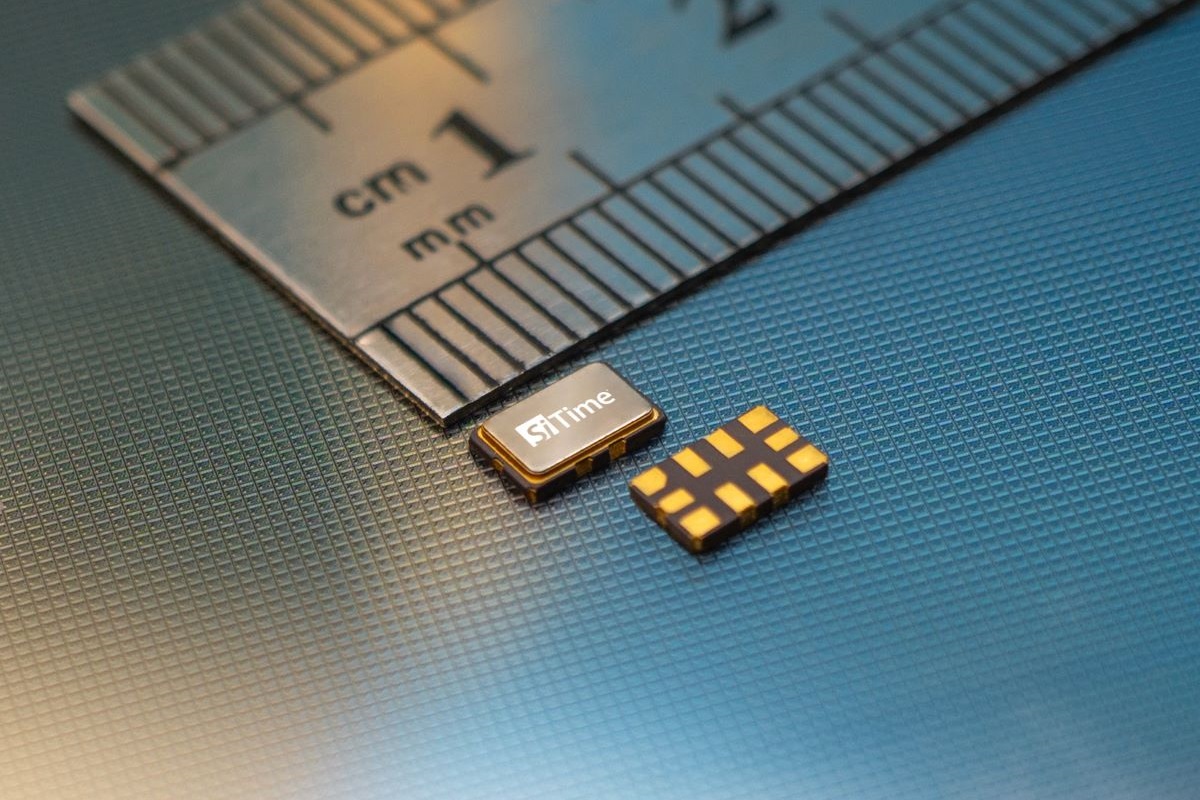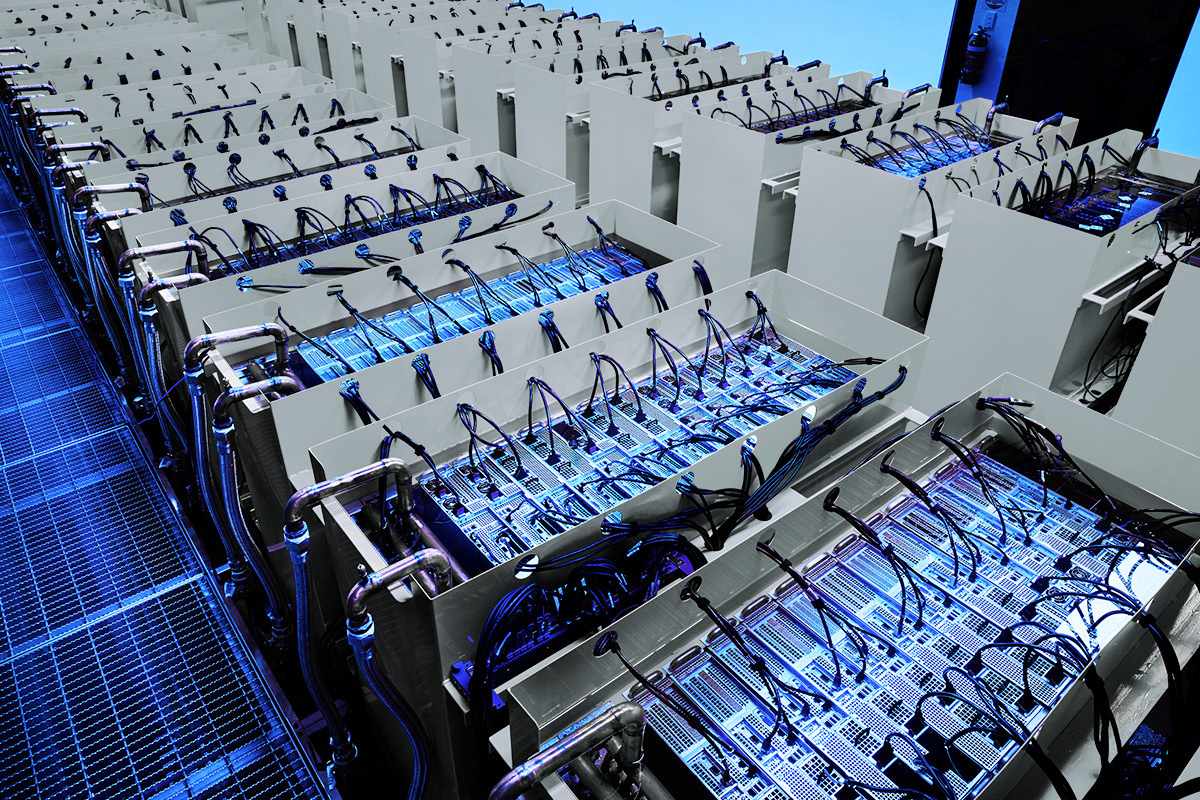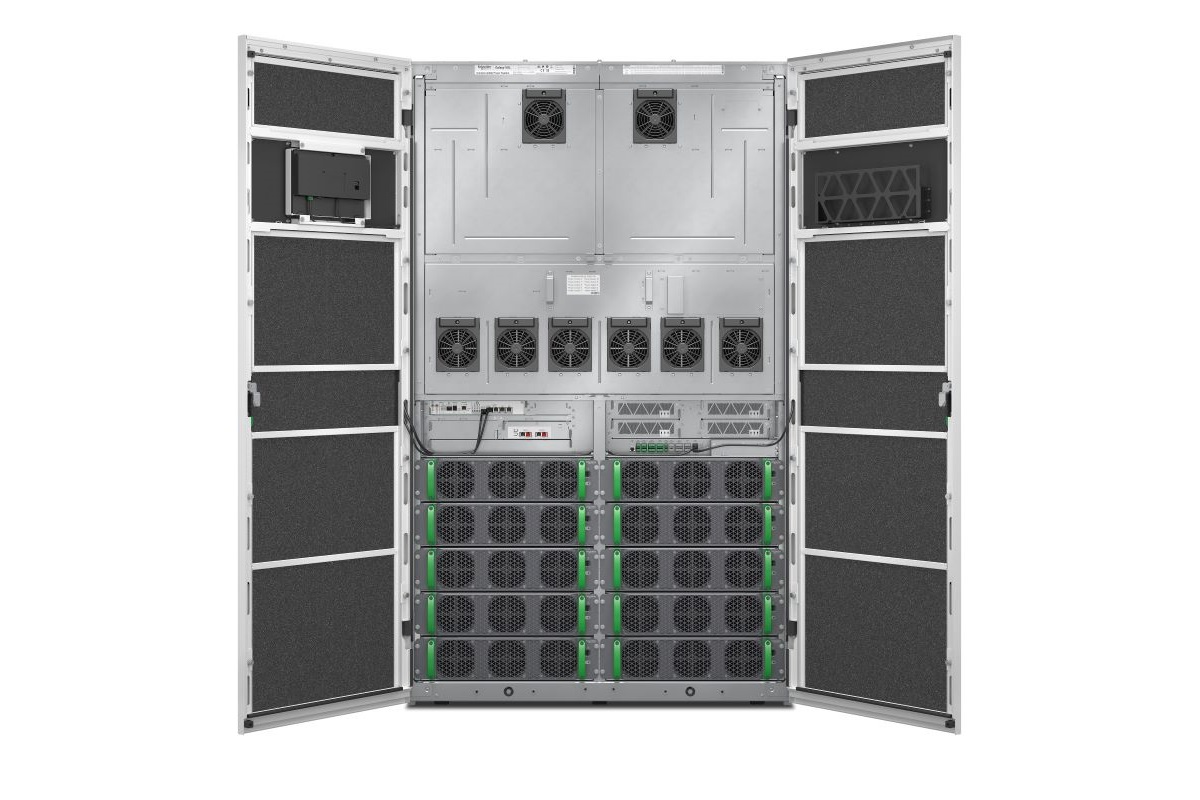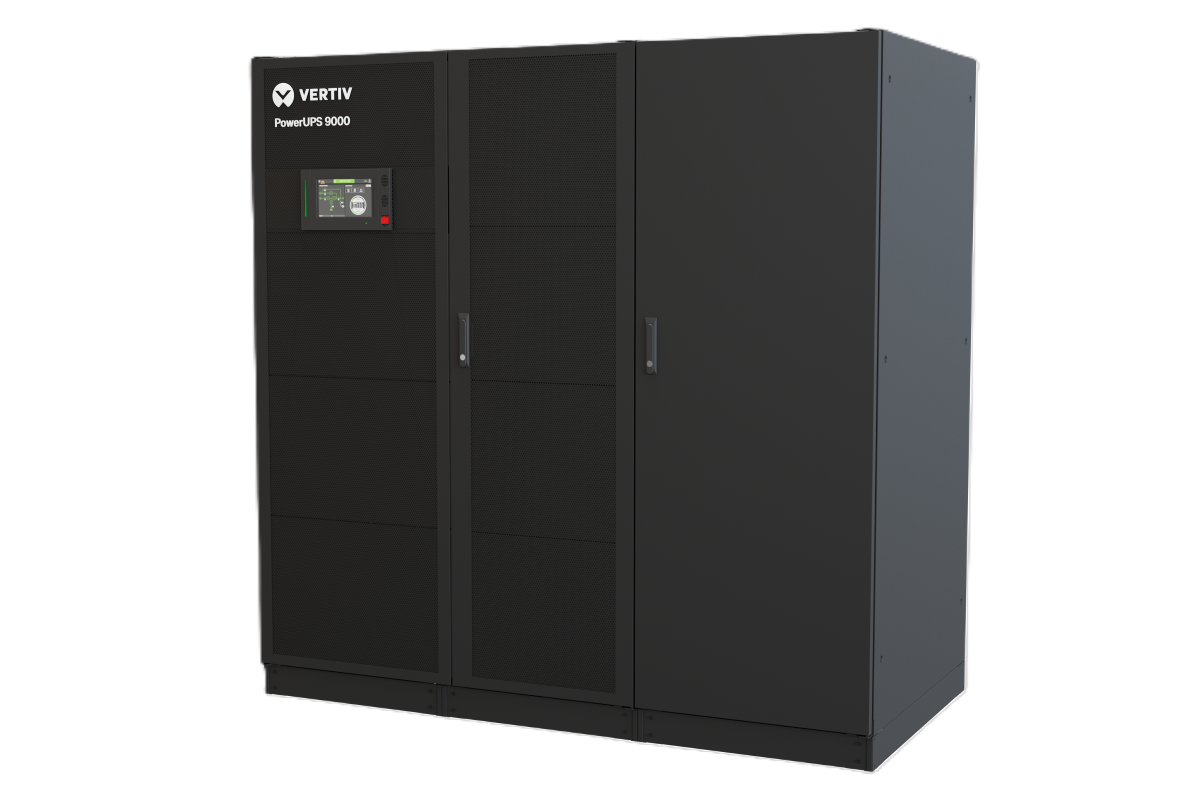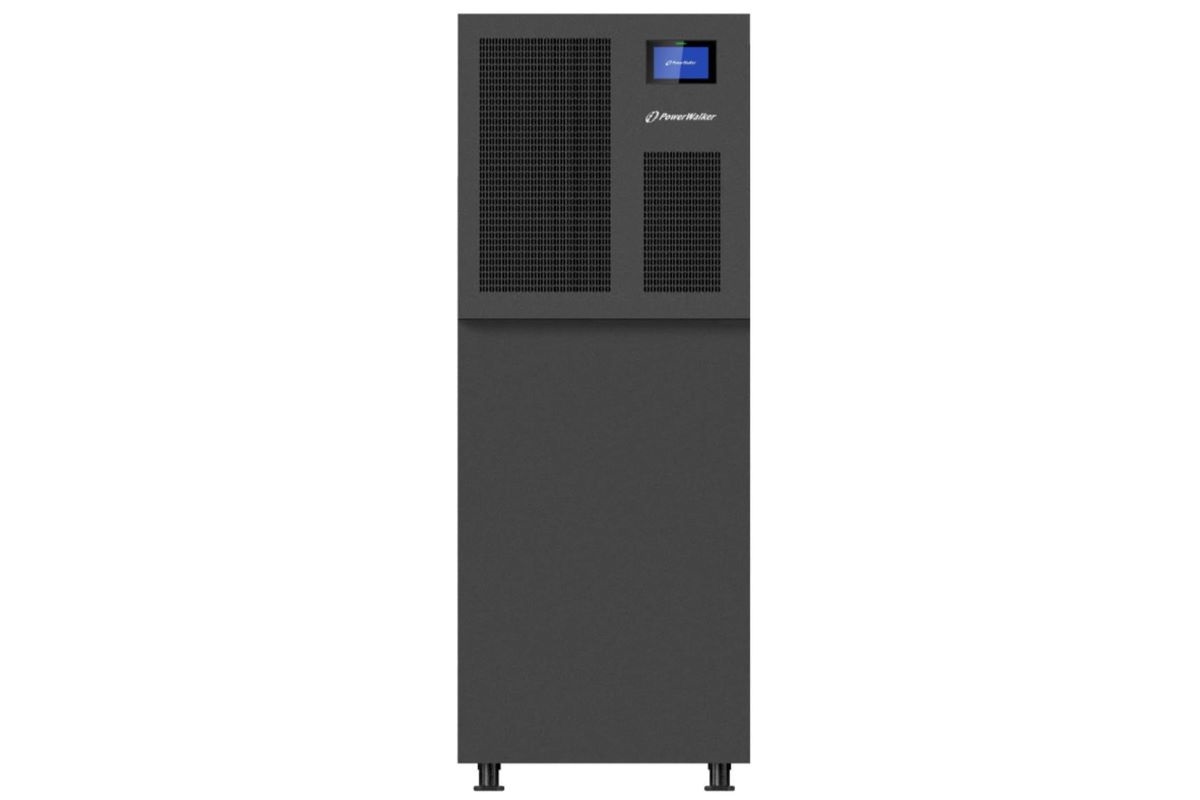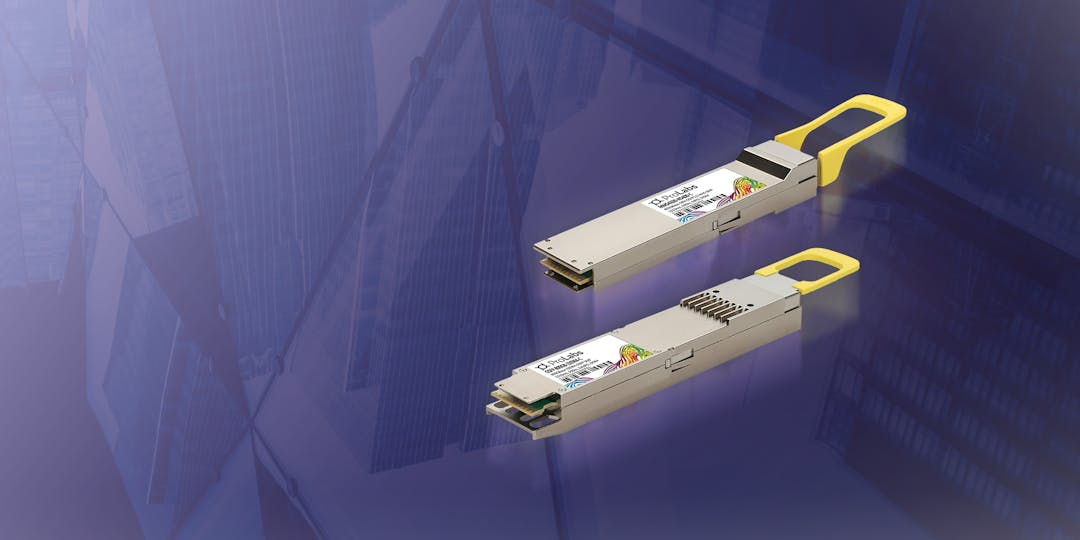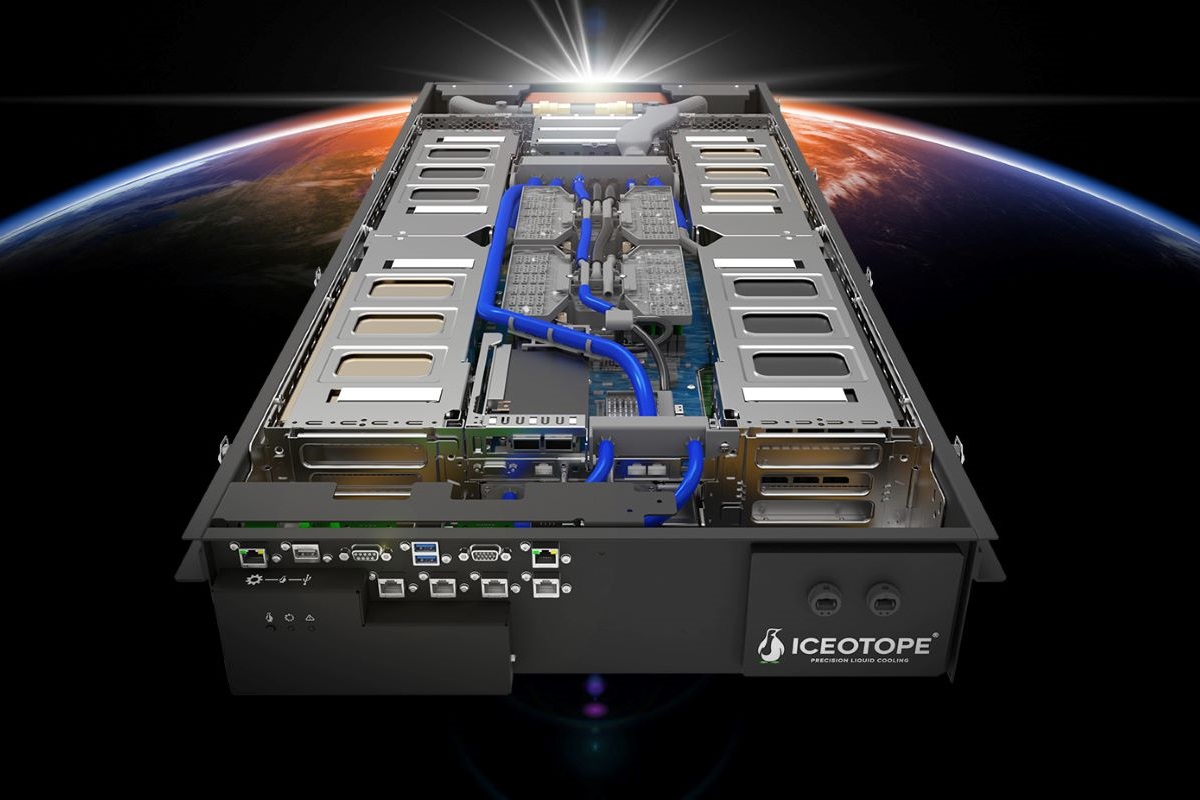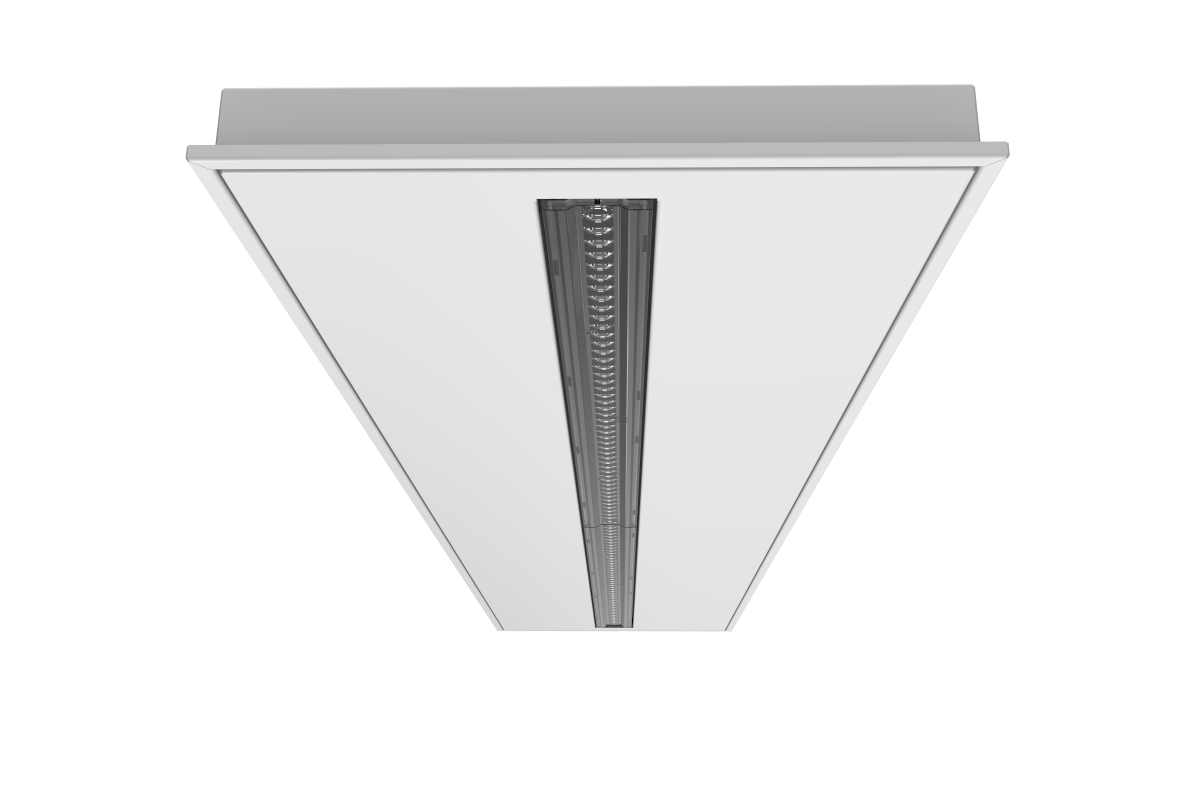Product
News
Product
SiTime product launch boosts efficiency of AI data centres
SiTime Corporation, a precision timing company, has announced the differential-ended SiT5977 Super-TCXO, the newest member of the SiTime Elite RF family.
The company states that this is the only single-chip timing product that delivers the most resilient performance for AI compute-nodes with high bandwidth and network synchronisation. Applications include smart network interface cards (Smart NICs), acceleration cards, switches and compute nodes in the $200 billion data centre infrastructure market.
According to a recent IDC press release, “IDC expects the surging demand for AI workloads will lead to a significant increase in data centre capacity, energy consumption and carbon emissions, with AI data centre capacity projected to have a compound annual growth rate (CAGR) of 40.5% through to 2027.”
Dave Altavilla, President and Principal Analyst at HotTech Vision & Analysis, comments, “Improving AI workload efficiency to reduce energy consumption and carbon emissions is an industry-wide challenge. SiTime is the only semiconductor company fully dedicated to developing innovative timing solutions required for the complex scaling of today’s AI data centres.”
An AI cluster’s efficiency results in lower total cost of ownership (TCO) and energy consumption. Efficient clusters require high-bandwidth interconnects and tightly synchronised orchestration to minimise AI accelerator idle time. Tighter synchronisation also provides precise network telemetry for AI operations. This network telemetry improves performance and reliability by identifying and mitigating underperforming hardware before it fails.
The SiT5977 replaces multiple timing components. It optimises the efficiency of AI compute clusters with three times tighter synchronisation for data transmission and communications in real-world environments. In addition, its four times smaller size, compared to competing architectures, enables larger processors in compact systems. This allows system architects to fully leverage high-speed 800G bandwidth network connectivity and maximise utilisation of the AI cluster.
“AI training and inference are fundamentally distributed computing applications, which require accurate timing to synchronise activities,” adds Piyush Sevalia, Executive Vice President of Marketing at SiTime. “By enabling a new, more efficient architecture, the Elite RF timing solution uniquely supports more efficient AI workload processing, which may lead to higher revenue and lower TCO for data centres.”
The SiT5977 Super-TCXO streamlines AI system architecture. This new timing chip is an ultra-stable, low-jitter TCXO with the industry’s highest frequency differential output. This chip further integrates digital control to provide additional system-level programmability.
Key features:
• Environmentally robust with ±1 ppb/°C frequency slope (dF/dT) for optimum performance under airflow, thermal shock.• Capable of driving 800G and higher links via 80 fs phase jitter and LVDS outputs.• Enables embedded control loops with precise digital tuning of output frequency (DCTCXO), ±400 ppm pull range and 0.05 ppt (5e-14) resolution via I2C/SPI.• Eliminates link flaps from quartz timing activity dips or micro jumps.• Resistant to shock, vibration and board bending.• Eliminates external LDOs via on-chip voltage regulators.• 156.25 MHz output frequency enabling high-speed SerDes and 800G links.
The SiT5977 Super-TCXO is in production and samples are available now.
For more from SiTime, click here.
Simon Rowley - 16 January 2025
Cooling
Data Centres
Events
News
Product
BAC to showcase new immersion cooling tank
Baltimore Aircoil Company (BAC) is to showcase its latest sustainable cooling innovations at the AHR Expo 2025 – the event for ‘everything new in HVACR’. Among the innovations at the company's stand will be the newly released immersion cooling tank, the TrilliumSeries adiabatic cooler, and the BAC’s Loop platform.
BAC's brand new immersion cooling tank, which attendees will have the opportunity to see at the expo, is designed to address the growing demands of data centres. This innovative technology achieves remarkable energy efficiency, BAC says, significantly reducing overall energy consumption by 51% and cooling energy by 95% compared to traditional designs.
The cooling process works through direct contact with data centre servers submerged in a dielectric fluid within immersion cooling tanks, with heat generated from servers absorbed by the fluid and transferred from the tanks to a cooling unit outside the facility to reject the heat. Once the fluid is cooled within the outdoor unit, it is then transferred back to the in-tank heat exchanger to absorb more heat. There is also no need for a chiller and virtually no maintenance. In combination with BAC’s outdoor heat rejection technologies – including cooling towers, adiabatic coolers, hybrid coolers, and dry coolers – BAC can help customers balance PUE and Water Use Effectiveness (WUE), providing options to meet site specific goals.
Visitors to the BAC booth will also have a chance to explore the TrilliumSeries adiabatic cooler, showcasing BAC's commitment to water and energy efficiency. This unique adiabatic cooler is ideal for applications demanding both energy efficiency and limited water use. The TrilliumSeries cooler features a smart water management system with high-efficiency pre-cooler pads, a dual pump recirculating system for code compliance, intelligent controls for optimised operation, and up to 20% energy savings compared to alternatives.
Also on display will be BAC’s innovative AI-driven Loop Platform, designed to enhance the efficiency and performance of HVAC systems. This compact yet powerful device optimises operational efficiency by continuously monitoring and adjusting for changes in environmental conditions. The Loop Platform offers real-time data analysis and performance optimisation, predictive maintenance capabilities, significant energy savings, reduced maintenance costs, and extended equipment lifespan.
This year’s AHR Expo will take place from 10-12 February at the Orange County Convention Center in Orlando, Florida. Visitors are invited to explore BAC's products at Booth 6243.
For more from Baltimore Aircoil Company, click here.
Simon Rowley - 14 January 2025
Cooling
Data Centres
News
Product
Castrol launches new direct-to-chip cooling fluid
Castrol has announced the launch of Castrol ON Direct Liquid Cooling PG 25, a new propylene glycol-based cooling fluid specifically designed for direct-to-chip cooling applications in high-performance data centres.
The ready-to-use solution helps meet the complex thermal management needs of today's high-performance computing, while offering protection against corrosion and bacterial growth.
Castrol ON PG 25 has been developed to meet the rapidly growing adoption of direct-to-chip cooling technology in data centres, driven by the demand for higher computing densities, particularly for applications like AI, machine learning, and high-performance computing. The global data centre cooling market is expected to reach $16.8 billion by 2028, with direct-to-chip cooling becoming widely adopted.
Traditional air cooling, which currently dominates data centre cooling, often cannot efficiently manage the heat generated by densely packed, high-power servers.
To address these escalating cooling demands, the industry is turning to more efficient solutions like direct-to-chip cooling which delivers liquid coolant directly to heat-generating components, enabling faster heat transfer and reducing the reliance on energy-intensive air conditioning systems.
This approach helps maintain the optimal operating temperatures crucial for system reliability and performance.
"As data centres continue to push the boundaries of computing power, direct-to-chip cooling offers an opportunity for data centres to manage the increasing thermal demands of next-generation processors," says Peter Huang, Global Vice President of Thermal Management, Castrol. "Through the launch of PG 25, we are combining Castrol's expertise in thermal management with our global capabilities to help customers meet their cooling challenges with efficiency."
Castrol’s new PG 25 fluid offers several key advantages for data centre operators:• Non-toxic propylene glycol formulation for enhanced safety in sensitive computing environments• Extended protection against metal corrosion and bacterial growth• Comprehensive compatibility with common cooling system materials• Ready-to-use 25% concentration requiring no dilution• Global availability backed by Castrol's technical support network
Castrol ON Direct Liquid Cooling PG 25 is supported by the company's comprehensive operational support and monitoring solutions, enabling data centre operators to optimise the performance of their cooling systems throughout their lifecycle.
"Through research and collaboration with our customers and technology partners, we've developed a truly end-to-end solution that supports data centres to rapidly implement and benefit from direct-to-chip cooling technologies while anticipating the future needs of the industry," adds Sung A Kim, Global Head of Technology for Data Centre Liquid Solutions, Castrol. "Further, our global network will enable us to provide comprehensive support all the way from initial testing to deployment, supporting our customers to confidently implement direct-to-chip cooling solutions across their facilities."
With the addition of Castrol ON Direct Liquid Cooling PG 25 to Castrol’s existing range of immersion cooling fluids and associated services, Castrol can be a one-stop partner for meeting the liquid cooling solutions of today and tomorrow.
The product is now available through Castrol's distribution network in selected markets.
For more from Castrol, click here.
Simon Rowley - 16 December 2024
Cooling
Data Centres
News
Product
STULZ introduces CyberAir Mini DX air conditioning unit
STULZ, a mission critical air conditioning specialist, has announced the introduction of its CyberAir Mini DX range of space saving innovations for small and medium sized heat loads. Available from January 2025, the CyberAir Mini DX complements the highly successful CyberAir Mini CW range, and together, they will replace the company’s MiniSpace series.
With the CyberAir Mini DX, STULTZ aims to build on the success of its CyberAir Mini CW, which was introduced in 2021 and is available in four sizes with cooling capacities between 8.9kW and 34.7kW. Built using state-of-the-art components, the CyberAir Mini DX is a compact and efficient precision direct expansion air conditioning system that delivers effective climate control in server rooms and telecommunication closets. It is ideal for businesses seeking to safeguard sensitive IT infrastructure through precise temperature control, while at the same time minimising operating costs.
The CyberAir Mini DX is available in three sizes, with outputs from 5.9kW to 22.7kW - and to offer the most appropriate option for the widest variety of applications, each device can be configured with a choice of five different cooling systems. These include two air-cooled direct evaporation systems (A/AS), a water-cooled direct evaporation system (G), a chilled water system with redundant air cooling (ACW) and a hybrid free cooling system (GE).
To further enhance the level of customer choice, the CyberAir Mini DX can operate with four different varieties of refrigerant. Alongside R410A and R407C options, STULZ is continuing its mission to provide the most sustainable air conditioning systems possible by offering R513A and R454C low Global Warming Potential (GWP) refrigerants.
"With our low-GWP R513A (GWP 631) and R454C (GWP 148) options, we are able to improve energy efficiency, reduce environmental impact and ensure regulatory compliance," explains Norbert Wenk, Head of Global Product Management at STULZ. "This is important, considering the European Union’s (EU) F-Gas Regulation, which targets a two-thirds reduction in the EU’s fluorinated greenhouse gas emissions by 2030 compared to 2014 levels. As one of the first manufacturers of air conditioning units to incorporate the use of R513A in its technology, we remain committed to extending the use of low-GWP refrigerants throughout our portfolio."
Safety is also a significant design consideration, and when using flammable refrigerants such as R454C, STULZ offers the necessary safety features as part of a complete system. In addition, CyberAir Mini DX models are available as upflow or downflow versions, with flexible intake and discharge options, while exceptional energy efficiency is achieved using electronically commutated (EC) fans which operate efficiently at partial loads and have low noise levels.
STULZ places a strong emphasis on user-friendliness, and thanks to an optimised device design, CyberAir Mini DX models are easy to maintain and are equipped with the STULZ E² control system. With a touchscreen display for intuitive operation and quick parameter configuration, functions such as redundancy management, cross-machine parallel operation, standby management with emergency operation and connection to a building management system (BMS) are also possible through the E² controller.
"As part of our programme of continual innovation, we are delighted with the CyberAir Mini DX, which successfully combines operational safety, scalability, durability and reliability," Norbert continues. "We will be taking orders from the start of 2025 and customers, planners and refrigeration contractors can reach out to their STULZ customer advisor at any time for detailed information and personalised advice."
For more from STULZ, click here.
Simon Rowley - 13 December 2024
News
Product
Schneider Electric announces Galaxy VXL UPS
Schneider Electric has announced the launch of its new Galaxy VXL – a highly efficient, compact, modular, scalable, and redundant 500-1250 kW (400V) three-phase uninterruptible power supply (UPS), complete with enhanced cyber security, software, and safety features.
At just 1.2m² with a power density of up to 1042 kW/m², Galaxy VXL UPS sets a new benchmark in efficient, sustainable, and advanced UPS technologies. Available immediately in all 400V IEC regions worldwide, Galaxy VXL delivers the highest levels of power performance for AI, colocation, and hyperscale data centre environments, as well as large-scale critical infrastructure and electrical systems within commercial buildings and industrial facilities.
With its industry-first compact design, high-density power provision, and AI-load tolerant design, Galaxy VXL maximises uptime and availability for the most energy-intensive infrastructure systems – being capable of powering up to 1.25 MW in one frame, and up to 5 MW with four units running in parallel, while increasing both operational and energy efficiencies to help minimise customers’ total cost of ownership (TCO).
Through its patented operating technologies, Galaxy VXL delivers up to 99% in its high-efficiency eConversion mode, and up to 97.5% efficiency in double conversion mode, providing Class-1 power protection alongside leading levels of energy reduction, while lowering the UPSs’ carbon emissions by a factor of two.
With a 52% smaller footprint compared with the industry average, its scalable, modular design also enables N+1 levels of redundancy to increase the system’s level of availability by a factor of 10. Further, through its modular architecture, customers can reduce their capital expenditure (CapEx) by purchasing power modules as they need them, enjoying optimised energy efficiency, and adding more power modules as demands grow.
Galaxy VXL is also compatible with both Lithium-ion and VRLA batteries, and with its Live Swap function, allows for greater uptime, availability, and easier serviceability – offering highly resilient, flexible, and predictable runtimes for data centre, IT, and critical electrical loads. This is complemented by anywhere remote monitoring via Schneider Electric’s EcoStruxure IT software, and enhanced security and ethernet connections, which are certified to the latest IEC 62443-4-2 security standards, providing a completely secure and connected remote management experience.
“As dependency on large-scale infrastructure systems grows at an unprecedented rate, it’s crucial that customers can access the most sustainable, resilient, and efficient technologies to safeguard their critical systems, while minimising their energy and environmental impact,” says Tarunjeet Sarao, SVP Data Centre Systems, Schneider Electric. “Our new Galaxy VXL UPS combines a compact, innovative, and highly efficient design with enhanced safety features, providing world-leading power protection for a wide range of AI, data centre, and industrial applications. This ensures the high-density workloads of the future are supported by unparalleled levels of reliability.”
Key features and benefits
Schneider Electric’s Galaxy VXL UPS has been designed to offer record breaking power densities, and an AI-ready power architecture for the most energy-intensive workloads. For the first time, this new UPS provides customers 1.25mw scalable and modular solution with 125kw/3U power modules in 1.2m² footprint, while being capable of supporting up to 1.25 MW of critical load in one frame and up to 5 MW with four units in parallel in only 4.8m² space.
Key benefits include:
• Modular, scalable, high-power design: With a power density of 1042 kW per squared meter, customers can deploy a 1.25 MW modular UPS in a single frame, and add power modules incrementally via pay-as-you-grow flexibility.• Smaller footprint: Standing at 1.2m², Galaxy VXL has a 52% footprint improvement compared with industry average, with full front access and no rear clearance, offering better power and space utilisation.• Increased efficiency and sustainability: Galaxy VXL provides up to 99% efficiency in eConversion mode and up to 97.5% efficiency in double conversion mode. Its compact footprint means raw material reduction, less packaging, and includes SPoT (Smart Power Test) mode for UPS and Power Module testing, saving electricity.• Lower CapEx and OpEx: Improved operational and energy efficiencies provide a catalyst for lower electricity bills, and ease of service/maintenance equates to lower labour cost for a better TCO.• Reinforced, resilient design: Galaxy VXL utilises conformal-coated boards, 100kA short circuit rating and optional seismic kit for a robust mechanical design.• Enhanced cyber security and safety: Galaxy VXL is certified to the latest IEC 62443-4-2 security standards and includes Live Swap technology to allow power module replacements, with zero downtime.• Extended lifespan via EcoCare: With Galaxy VXL, Schneider Electric is introducing EcoCare membership, a next-generation services plan, providing premium on-site and remote access to technical experts, 24/7 remote monitoring powered by AI, condition-based maintenance to minimise on-site disruptions by up to 50%, and help extend the UPS’s lifespan.• Perfect for prefabricated data centres: With a smaller physical footprint, higher efficiency, and lower cost, Galaxy VXL provides a resilient backbone for the prefabricated data centres of the future.
Scaling-up to customer demands for AI systems
To meet customer demands for AI systems, Schneider Electric has increased manufacturing and production capacity at a host of its global factories, where its annual production capacity for Galaxy VXL UPS will exceed 9,000 units in 2025.
Additionally, Galaxy VXL UPS will be available at Schneider Electric’s Sant Boi, Barcelona factory, where it will be integrated to form the resilient backbone for Schneider Electric’s prefabricated, modular range of high-compute workload data centre solutions.
Schneider Electric’s Galaxy VXL UPS is available for order immediately.
For more from Schneider Electric, click here.
Simon Rowley - 5 December 2024
News
Product
Vertiv introduces compact, high-power density UPS
Vertiv, a global provider of critical digital infrastructure and continuity solutions, today introduced the Vertiv PowerUPS 9000, an energy-efficient, high-power density uninterruptible power supply (UPS) system with a compact footprint. The system is engineered to support IT applications from traditional computing to high density applications. It is available globally in UL and CE models, from 250 to 1250kW per unit.
The Vertiv PowerUPS 9000 is designed for high-power density, as well as a high double-conversion efficiency of up to 97.5%. The system enables fast and easy installation, with top or bottom cable entry, as well as backfeed protection and ground fault kit options that are embedded in the system without need for extra space or on-site installation. The units are deployable anywhere in the world, reducing potential procurement and service inconsistencies, delivery delays and downtime.
“The Vertiv PowerUPS 9000 UPS is engineered to maximise reliability and efficiency and to minimise footprint and complexity,” says Giovanni Zanei, Vice President, large power at Vertiv. “With its modular structure and high-power density, it will deliver energy-efficient, reliable power protection that data centre customers are looking for to protect both traditional and mixed AI applications.”
The Vertiv PowerUPS 9000 is Vertiv’s most efficient UPS in its product class, with a physical footprint 32% smaller than previous generations. It is compatible with Vertiv EnergyCore lithium battery cabinet, and other battery technologies, including Valve-Regulated Lead-Acid (VRLA) and Nickel-Zinc.
Dedicated, segregated controls and dual, hot-swappable communication and control boards allow each power module to operate independently. In the event of a fault, the affected module can isolate itself, thereby protecting the other modules and enabling continued operation. The continuous-duty solid state static bypass switch optimises the bypass line, and the system is fully hot-service and hot-swappable, meaning maintenance and upgrades can occur without downtime.
The Vertiv PowerUPS 9000 can be enabled with Vertiv Next Predict, a preventative maintenance strategy with advanced monitoring, data-driven health analytics and insights that optimises site operations. By leveraging AI and machine learning algorithms to monitor actual equipment conditions and measure equipment health, Vertiv offers a comprehensive solution for optimal equipment performance and longevity.
In Vertiv’s test labs, Vertiv engineers subjected Vertiv PowerUPS 9000 to extensive Engineering Validation Tests (EVT) and Design Validation Tests (DVT) against a wide spectrum of operational conditions to confirm its performance and reliability in real-world scenarios. It also passed additional environmental, performance and corner case tests - including debris protection, structural tests of seismic integrity and durability, and voltage surge and sag tests - that simulated extreme conditions the system may encounter.
For more from Vertiv, click here.
Simon Rowley - 4 December 2024
Data Centres
News
Product
PowerWalker showcases power products at Paris exhibition
PowerWalker, a power management specialist, is currently showcasing its latest innovations at Data Centre World Paris 2024, which is taking place from 27-28 November. Technologies on display include the all-in-one Micro Data Centre (MDC), the compact-footprint TAP series, and the CPM series.
PowerWalker’s technologies are designed to address the increasing electricity demand in data centres, AI servers, and IoT applications. These products enhance reliability and energy efficiency, supporting the growth of AI and IoT technologies globally.The PowerWalker MDC (Micro Data Centre) is an efficient and eco-friendly solution for data centre infrastructure. It combines various subsystems such as UPS, power distribution, precision cooling, edge computing, dynamic monitoring, system connection, and intelligent management into a single cabinet. Instead of cooling the complete server room, installing a MDC is way more eco-friendly to the environment.
Featuring intelligent cooling and monitoring technology, the PowerWalker MDC enhances energy and protection efficiency. It uses R410A refrigeration, which has a lower climate change impact compared to older refrigerants. This results in more efficient cooling systems, helping businesses save on energy costs while protecting the environment. With its built-in temperature and humidity sensors, it is an ideal protection for sensitive IT equipment.
The PowerWalker MDC includes three sub-series: Basic Single Rack without Cooling, Standard Single Rack with Self-Contained DX Cooling, and Standard Single Rack with Split DX Cooling. The custom-built system allows customers to choose between single-rack and multi-rack systems, ensuring a perfect fit for specific needs.
The PowerWalker VFI TAP PF1 BE series is a three-phase UPS series with three-step IGBT PWM control technology, boasting up to 96% efficiency in online mode and 99% efficiency in ECO mode. This series’ compact design reduces up to 50% of the footprint, making it ideal for data centres and industrial complexes. The series works with lead-acid batteries and provides longer backup time. Its optimised battery management (OBM) helps extend battery life by 50%.
The system's non-master-slave paralleling technology eliminates the risk of shutdown due to a single point of failure, ensuring continuous operation. It can be paralleled and reaches an output power of up to 320kW. Another feature of the PowerWalker VFI TAP PF1 BE series is its flexibility. The 32-44 battery adjustmentprovides a more flexible battery configuration.The PowerWalker VFI CPM Series is a single 42U three-phase cabinet that offers space for 10 60kW power modules. This online modular solution can reach an output power of 600kW and features hot-swappable power modules available in 60kW. The cabinet manages synchronised work and parallel operation, resulting in a very low Mean Time To Repair (MTTR) and parallel redundancy.
The CPM cabinets can be configured with UPS modules, battery slots, and a combination of both, offering the highest flexibility. The CPM series combines high flexibility and scalability with excellent efficiency up to 94.5% in online mode, making it an optimal power solution for commercial purposes.
Additionally, each CPM cabinet includes a switch module, an STS module, and an LCD panel. CPM cabinets are available in 30U and 42U sizes, with a compact economy version available in 15U. The CPM cabinets can also operate in parallel, doubling capacity.
Simon Rowley - 28 November 2024
Data Centres
News
Product
New transceivers to empower AI applications within networks
Data centre operators can now achieve the unparalleled speeds needed for the most demanding artificial intelligence (AI) applications, thanks to a new range of 400G and 800G transceivers launched by ProLabs. The new transceivers and cables will empower operators to make crucial network enhancements, the company states.
“As the global leader in compatible optics, we are committed to providing optical solutions that come at a fraction of the cost of Network Equipment Manufacturers (NEMs),” says Ray Hagen, ProLabs Vice President, Product Line Management, Transceiver Products. “These transceivers represent over a decade’s worth of work in developing AI-enhancing solutions for the optical market. This makes ProLabs the trusted and proven source for companies looking to utilise the latest AI tools and developments.”
Generative AI is revolutionising network infrastructure, driving resource-intensive workloads and extensive amounts of power to process data in real time. As a result, optical transceivers have become crucial in delivering the high-speed, high-bandwidth connectivity required to support AI systems. The use of third-party, compatible transceivers from ProLabs means operators can use solutions that are typically 70% cheaper than those offered by the leading NEMs.
The launch includes the 800G OSFP 2xSR4 and 800G OSFP 2xDR4, the first major third-party 800G optics designed to meet the needs of AI-enhanced networks. Alongside the 800G solutions, SC24 will see the introduction of the 400G QSFP112 SR4 and 400G QSFP112 DR4 transceivers, which provide operators with high performance modules for short-length applications. Also available will be ProLabs’ innovative 400G OSFP-RHS SR4 and DR4 transceivers, as well as TAA solutions.
All ProLabs transceivers have been designed for seamless integration with all major NEM platforms, including Nvidia and Mellanox, having been extensively tested and validated to ensure compatibility.
“Our foundation is based on quality components and 100% performance and compatibility testing that meets or exceeds the industry standard,” Ray continues. “These AI transceivers have been run through a stringent testing, validation and coding process to ensure accountability and quality assurance. Our customers can rest assured that they have the best solution for empowering AI deployments within their networks.”
Customers also benefit from round-the-clock support and teams of localised field engineers and consultants should any issues arise. The commitment to quality service extends to availability, with a guarantee to deliver out-of-stock products within two weeks of an order being placed.
For more from ProLabs, click here.
Simon Rowley - 25 November 2024
Infrastructure
News
Power & Cooling
Product
Iceotope launches new precision liquid-cooled server
Iceotope, a Precision Liquid Cooling (PLC) specialist, has announced the launch of KUL AI, a new solution to deliver the promise of AI everywhere and offering significant operational advantages where enhanced thermal management and maximum server performance are critical.
KUL AI features an 8-GPU Gigabyte G293 data centre server-based solution integrated with Iceotope’s Precision Liquid Cooling and powered by Intel Xeon Scalable processors – the most powerful server integrated by Iceotope to date. Designed to support dense GPU compute, the 8-GPU G293 carries NVIDIA Certified-Solutions accreditation and is optimised by design for liquid cooling with dielectric fluids. KUL AI ensures uninterrupted, reliable compute performance by maintaining optimal temperatures, protecting critical IT components, and minimising failure rates, even during sustained GPU operations.
The surge in power consumption and sheer volume of data produced by new technologies including Artificial Intelligence (AI), high-performance computing (HPC), and machine learning poses significant challenges for data centres. To achieve maximum server performance without throttling, Iceotope's KUL AI uses an advanced precision cooling solution for faster processing, more accurate results, and sustained GPU execution, even for demanding workloads. KUL AI is highly scalable and proven to achieve up to four times compaction, handling growing data and model complexity without sacrificing performance.
Its innovative specifications make KUL AI ideal for a range of industries where AI is becoming increasingly essential: from AI research and development centres, HPC labs and cloud service provider (CSPs), to media production and visual effects (VFX) studios, and financial services and quantitative trading firms.
Fitting seamlessly into the KUL family of Iceotope technologies, KUL AI uses Iceotope’s Precision Liquid Cooling technology which offers several advantages – from providing uniform cooling across all heat-generating server components to reducing hotspots and improving overall efficiency. Additionally, PLC eliminates the need for supplementary air cooling, leading to simpler deployments and lower overall energy consumption.
Improving cost-effectiveness and operation efficiency are constant targets for Iceotope. In fact, KUL AI’s advanced thermal management maximises server utilisation, boosting compute density, cutting energy costs, and extending hardware lifespan for a lower total cost of ownership (TCO). Furthermore, KUL AI cuts energy use by up to 40% and water consumption by 96%, and minimises operational costs, while maintaining high thermal efficiency and meeting sustainability targets.
Built with scalability and adaptability in mind, KUL AI is deployable in both data centres and across all edge IT installations. Precision Liquid Cooling removes noisy server fans from the cooling process, resulting in near-silent operations and making KUL AI ideal for busy non-IT and populous workspaces which nonetheless demand sustained GPU performance.
Ideal for latency-sensitive edge deployments and environments with extreme conditions, KUL AI is sealed and protected at the server level, not only ensuring uniform cooling of all components on the GPU motherboard, but also rendering it impervious to airborne contaminants and humidity for greater reliability. Crucially, PLC minimises the risk of leaks and system damage, making it a safe choice for any critical environments.
Nathan Blom, Co-CEO of Iceotope, says, “The unprecedented volume of data being generated by new technologies demands a state-of-the-art solution which not only guarantees server performance, but delivers on all vectors of efficiency and sustainability. KUL AI is a pioneering product delivering more computational power and rack space. It offers a scalable system for data centres and is adaptable in non-IT environments, enabling AI everywhere.”
The launch will be showcased for the first time at Super Computing 2024, taking place in Atlanta from 17-22 November 2024. The Iceotope team will be welcoming interested parties at nVent Booth 1738. To schedule an introductory meeting, contact sales@iceotope.com.
For more from Iceotope, click here.
Simon Rowley - 12 November 2024
Data Centres
News
Product
NVC Lighting to launch new products at DataCentres Ireland
Visitors to this year’s DataCentres Ireland exhibition can learn how NVC Lighting’s new products, designed specifically for the sector, can contribute to increased energy efficiency and cost savings.
The ‘around the clock’ operational nature of data centres means that dependable lighting has long been a crucial component in allowing for optimum performance. Now, with the global focus on sustainability and energy saving, NVC Lighting will be launching its BROADWAY range, which utilises LED lighting technology to offer data centre buildings a more efficient solution than ever before, to the European market.
Visitors to the two-day exhibition and conference, being held from 20-21 November at the RDS in Dublin, can speak with the NVC Lighting team at Stand 237, who will be showcasing the new BROADWAY products and a range of regular fittings, as well as examples of its work to support data centres.
High-quality lighting enhances visibility, reduces the risk of accidents, and supports efficient maintenance operations. The BROADWAY range is specifically designed to offer energy-efficient, low-glare solutions that ensure a safe and productive data centre environment.
The NVC Lighting team, which supports clients in a range of sectors across the UK, have focused on optimising its high performance, energy efficient products to contribute to the need for Power Usage Effectiveness (PUE) reduction.
Phil Brown, Product & Marketing Director at NVC Lighting, says, “We’re excited to launch the optimised BROADWAY range at DataCentres Ireland – these are products which can have a major impact on energy efficiency across the sector, with a relatively low outlay compared to major investments elsewhere.
“Working with an efficient and effective LED lighting can lead to significant cost savings in a shorter period of time – over the longer term, their lifespan ensures that it’s an investment which stands the test of time.
“This investment not only reduces operating costs but also contributes to a more sustainable and environmentally friendly data centre.”
For more from DataCentres Ireland, click here.
Simon Rowley - 7 November 2024

Head office & Accounts:
Suite 14, 6-8 Revenge Road, Lordswood
Kent ME5 8UD
T: +44 (0)1634 673163
F: +44 (0)1634 673173
